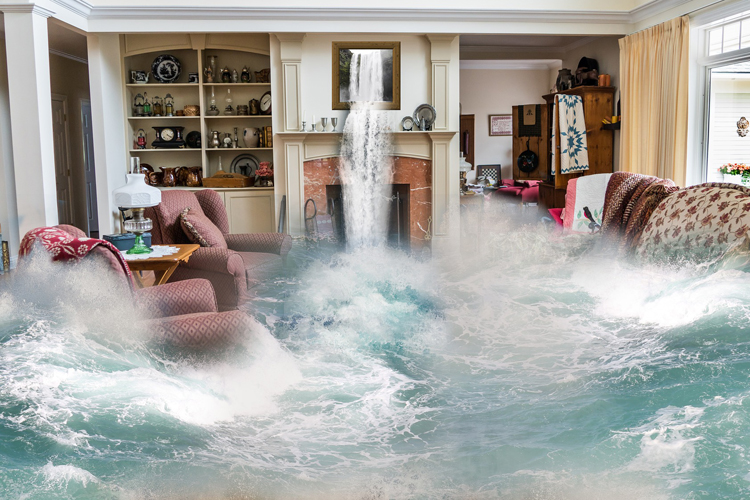6 Water Damage Restoration Do's and Don'ts.
6 Water Damage Restoration Do's and Don'ts.
Blog Article
The content which follows involving What You Can Do At Home To Prevent Fire And Water Damage is quite enlightening. Give it a go and make your own personal findings.

Water offers life, yet water breach on some components where it's not meant to be can lead to damage and also aggravation. It can peel off away the surface and also deteriorate the material's structure if the water leaks into your structure. Mold and mildew as well as mildew likewise flourish in a wet atmosphere, which can be dangerous for your as well as your family's wellness. Additionally, residences with water damage odor stuffy as well as old.
Water can originate from several resources like hurricanes, floodings, ruptured pipelines, leakages, and also sewer issues. If you have water damage, it's better to have a working understanding of security preventative measures. Here are a few standards on just how to manage water damages.
Do Prioritize House Insurance Coverage Coverage
Seasonal water damage can originate from floodings, seasonal rainfalls, as well as wind. There is also an event of an unexpected flood, whether it originated from a damaged pipeline that all of a sudden breaks right into your home. To shield your house, get home insurance policy that covers both acts of God such as all-natural calamities, and also emergency situations like broken plumbing.
Do Not Forget to Shut Off Energies
When catastrophe strikes and also you're in a flood-prone location, turn off the primary electric circuit. Turning off the power stops
When water comes in as water offers as a conductor, electrical shocks. Don't neglect to turn off the primary water line valve as a method to stop even more damages.
If the floodwaters are getting high, keep your furniture steady as they can move as well as trigger added damages.
Do Remain Proactive as well as Heed Climate Signals
If you live in an area afflicted by floods, remain aggressive and also prepared at all times. Pay attention to the information and also discharge cautions if you live near a body of water like a lake, creek, or river .
Don't Neglect the Roofing System
Your roofing professional must take care of the defective rain gutters or any kind of other signs of damage or weakening. An examination will stop water from streaming down your walls and saturating your ceiling.
Do Focus On Small Leakages
There are red flags that can attract your interest and also indicate to you some weakened pipelines in your home. Indications of red flags in your pipelines include bubbling paint, peeling off wallpaper, water touches, water stains, or leaking noises behind the walls. Repair service and also evaluate your plumbing repaired before it results in enormous damages to your residence, finances, and a personal headache.
Don't Panic in Case of a Burst Pipe
Timing is key when it comes to water damages. If a pipeline bursts in your residence, instantly closed off your major water valve to cut off the resource and avoid even more damages. Call a reliable water damage restoration specialist for support.
Water provides life, however water intrusion on some parts where it's not intended to be can result in damages as well as hassle. In addition, residences with water damages smell old and stuffy.
Seasonal water damage can come from floods, seasonal rainfalls, as well as wind. Signs of red flags in your pipelines include gurgling paint, peeling wallpaper, water touches, water spots, or dripping noises behind the walls. If a pipeline bursts in your house, promptly shut off your primary water valve to cut off the resource and stop more damage.
Some Do's & Don't When Dealing with a Water Damage
DO:
Make sure the water source has been eliminated. Contact a plumber if needed. Turn off circuit breakers supplying electricity to wet areas and unplug any electronics that are on wet carpet or surfaces Remove small furniture items Remove as much excess water as possible by mopping or blotting; Use WHITE towels to blot wet carpeting Wipe water from wooden furniture after removing anything on it Remove and prop up wet upholstery cushions for even drying (check for any bleeding) Pin up curtains or furniture skirts if needed Place aluminum foil, saucers or wood blocks between furniture legs and wet carpet Turn on air conditioning for maximum drying in winter and open windows in the summer Open any drawers and cabinets affected for complete drying but do not force them open Remove any valuable art objects or paintings to a safe, dry place Open any suitcases or luggage that may have been affected to dry, preferably in sunlight Hang any fur or leather goods to dry at room temperature Punch small holes in sagging ceilings to relieve trapped water (don't forget to place pans beneath!); however, if the ceiling is sagging extremely low, stay out of the room and we'll take care of it DO NOT:
Leave wet fabrics in place; dry them as soon as possible Leave books, magazines or any other colored items on wet carpets or floor Use your household vacuum to remove water Use TV's or other electronics/appliances while standing on wet carpets or floors; especially not on wet concrete floors Turn on ceiling fixtures if the ceiling is wet Turn your heat up, unless instructed otherwise

As a serious person who reads on Keeping Your Home Safe This Holiday Season, I imagined sharing that chunk was worthwhile. Be sure to take the time to distribute this blog if you liked it. We truly appreciate reading our article about Preventing Fires and Water Damage In Your Home.
Report this page